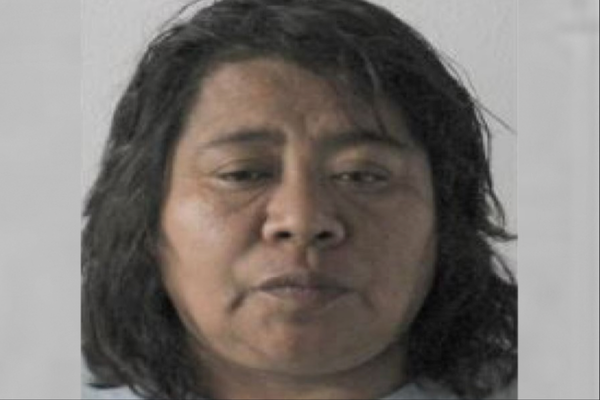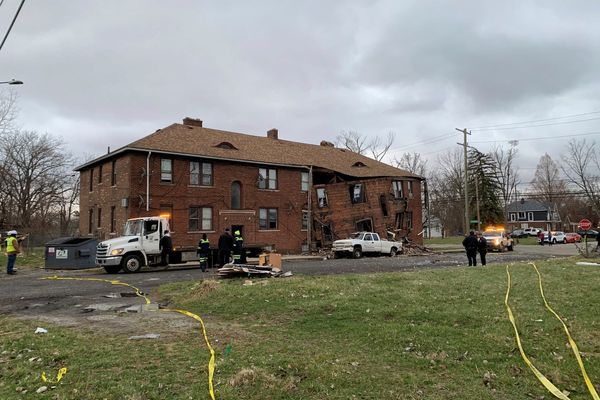It is often lamented that Indigenous peoples’ electoral power is insignificant in Australia, except perhaps in the remote Northern Territory seat of Lingiari.
But our new analysis of Indigenous populations in marginal seats at the upcoming federal election suggests Indigenous votes could matter — and not just in remote Australia.
As we show below, there are 15 marginal seats across Australia where the number of eligible Indigenous voters is larger than the electoral margin at the last federal election.
That means Indigenous peoples have considerably more potential electoral power than has been appreciated. Bringing together an Indigenous voting bloc would require rallying enrolled voters, and persuading non-enrolled eligible Indigenous voters to participate.
Invisible electoral power of Indigenous peoples
Indigenous people make up a relatively small part of the Australian population — just 3.3% at the 2016 Census. This fact leads some prominent figures to consider Indigenous participation in elections as ineffective. However, because the Indigenous population is not evenly spread across Australia, there are strategic opportunities for Indigenous people to exercise electoral power.
Minority groups in marginal seats can wield significant electoral influence. For example, Australian citizens of Chinese-Australian ancestry are considered to hold decisive electoral power in some marginal electorates.
Indigenous votes are generally considered to be decisive only in the remote Northern Territory seat of Lingiari. Lingiari covers all the Territory except Darwin with just under half of the population being Indigenous. Here, Indigenous voters are widely acknowledged to be crucial in a close electoral contest.
Our analysis shows Indigenous votes could be important in several seats beyond the Northern Territory. The table below describes 15 seats where the estimated number of eligible Indigenous voters is larger than the electoral margins at the 2019 federal election.
These include other remote seats such as Leichhardt and Kennedy in northern Queensland, and Durack, which covers most of Western Australia. But this list of electoral divisions also includes several urban marginal seats such as Lilley in northern Brisbane, Dobell on the New South Wales Central Coast, and Cowan in Perth.
However, most of these 15 seats are in regional areas, particularly in NSW and Tasmania.
À lire aussi : Why voter ID requirements could exclude the most vulnerable citizens, especially First Nations people
Mobilising an Indigenous vote
Our paper uses data from the Australian Electoral Commission. These data suggest fewer than half of Indigenous voters are both enrolled and cast a vote. This creates challenges for parties and independents alike. However, addressing these challenges creates significant opportunities.
If Indigeonus people who are eligible to vote but that until now haven’t, did vote, these previously inactive voters would outnumber the 2019 electoral margins in ten of the 15 marginal seats listed above. In other words, if non-voting Indigenous peoples enrolled and voted, they would be decisive in these ten seats.
Low rates of Indigenous electoral participation mean that campaigns aiming to appeal to Indigenous voters might rely on tactics more generally used in countries with voluntary voting systems. These include “get out to vote” campaigns and the provision of policies that aim excite a “base” of voters. These are quite different strategies to those typically used in Australia, which tend to appeal to the middle of the political spectrum.
The Australian Electoral Commission (AEC) is currently the subject of a complaint being mediated by the Australian Human Rights Commission. West Arnhem Regional council Mayor Matthew Ryan alleges the AEC has suppressed votes through indirect discrimination.
In April, the AEC told NITV news it was increasing efforts to encourage Indigenous people to vote in the federal election, including speaking to community leaders and partnering with Indigenous media. “That is a really critical issue for us,” commissioner Tom Rogers said.
But the AEC needs to provide more support to Indigenous voters. This would require facilitating remote enrolment, improving access to the ballot box, providing interpreter services where appropriate, and further investment in voter education programs.
Equally importantly, parties and/or independents would need to offer attractive policies that support Indigenous peoples’ aspirations and visions for the future.
Of course Indigenous peoples, like all other groups in society, are unlikely to vote as a single cohort. Research has demonstrated Indigenous voters do change their votes between parties in response to policies and choice of representatives. But it is up to those running to garner support.
À lire aussi : To Australians sick of the election: this is why voting is not a waste of your time
A different democratic narrative
In his 2014 essay “A Rightful Place”, Noel Pearson spoke of the “feeble democratic participation” of Indigenous peoples. We believe this view of Indigenous electoral frailty to be misguided and disempowering. The discussions about Indigenous electoral insignificance can become self-fulfilling, as Indigenous peoples think their vote doesn’t matter, so they don’t vote. This results in their electoral power going unrealised.
We do not believe electoral participation alone will advance Indigenous interests in this country. It must be used alongside other strategies including activism, lobbying, and establishing a First Nations Voice. However, harnessing the electoral power of Indigenous peoples may offer opportunities to further progress in these areas.
Electoral empowerment can only begin when Indigenous peoples recognise that their votes matter. As the youthful Indigenous population grows older and more Indigenous people reach voting age, potential electoral power will only grow.
The question then becomes how we can support Indigenous communities to wake up this electoral power and wield it to promote the sustainable self-determination of Indigenous peoples.
Francis Markham does not work for, consult, own shares in or receive funding from any company or organisation that would benefit from this article, and has disclosed no relevant affiliations beyond their academic appointment. He is not a member, employee or officeholder of any political party.
Bhiamie Williamson ne travaille pas, ne conseille pas, ne possède pas de parts, ne reçoit pas de fonds d'une organisation qui pourrait tirer profit de cet article, et n'a déclaré aucune autre affiliation que son organisme de recherche.
This article was originally published on The Conversation. Read the original article.







